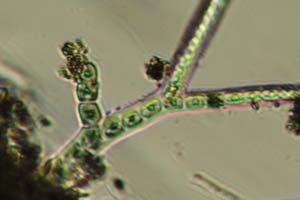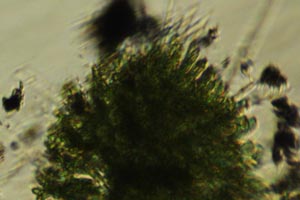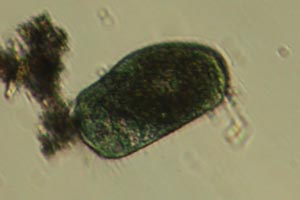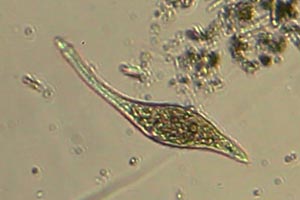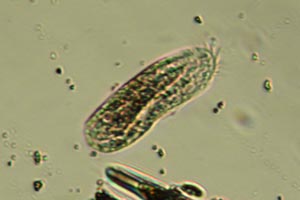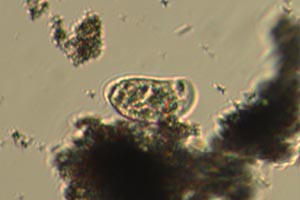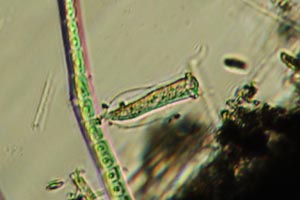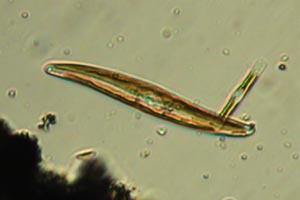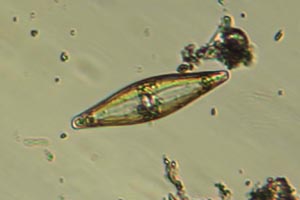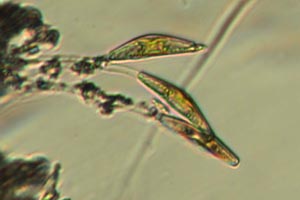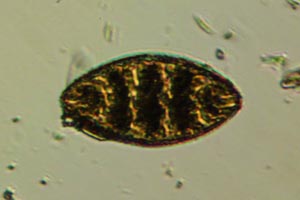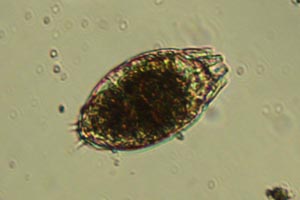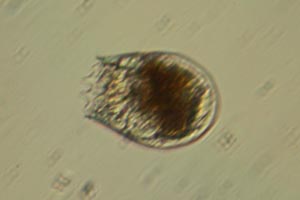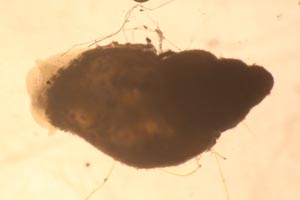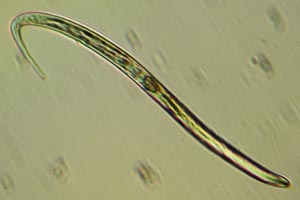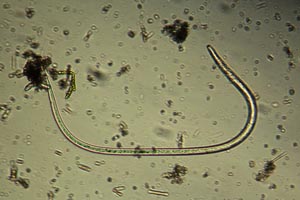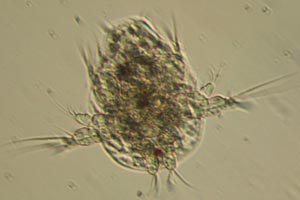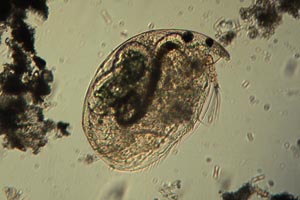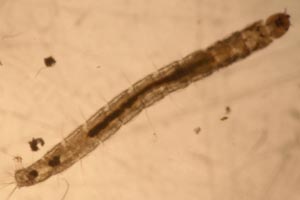May 22-23, 2009
Previous sample - Next sample
The water here had receded about a metre over the past week, and in several places many hard brown pieces of stoneworts had collected among the rocks, giving them a stronger “aquatic” scent. Some of these were taken as well as a rock caked in hard mud. An amphipod, some midge larvae, and a pond snail were also found in the sample.
Diatoms occurred throughout, most notably stalked Cymbella on the mud. There were also some ciliates, including both blue-green and colourless heterotrichs, and a few short-toed rotifers and roundworms. One piece of stonewort had several epiphytes, mainly tree-shaped Chaetophora but also Chroodactylon.
